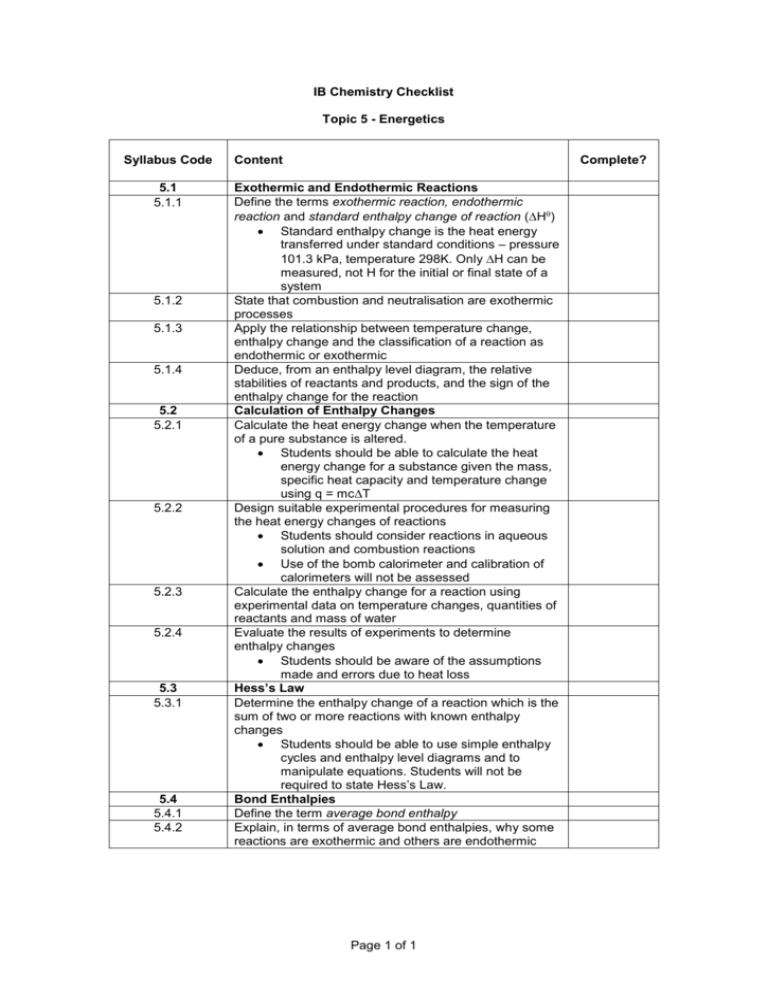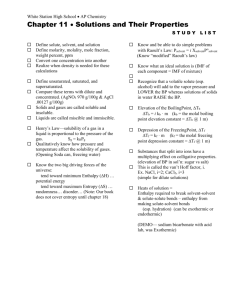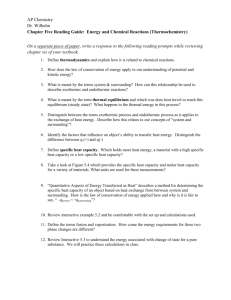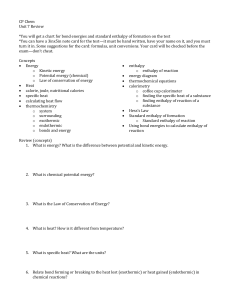IB Chemistry Checklist
advertisement

IB Chemistry Checklist Topic 5 - Energetics Syllabus Code 5.1 5.1.1 5.1.2 5.1.3 5.1.4 5.2 5.2.1 5.2.2 5.2.3 5.2.4 5.3 5.3.1 5.4 5.4.1 5.4.2 Content Complete? Exothermic and Endothermic Reactions Define the terms exothermic reaction, endothermic reaction and standard enthalpy change of reaction (H) Standard enthalpy change is the heat energy transferred under standard conditions – pressure 101.3 kPa, temperature 298K. Only H can be measured, not H for the initial or final state of a system State that combustion and neutralisation are exothermic processes Apply the relationship between temperature change, enthalpy change and the classification of a reaction as endothermic or exothermic Deduce, from an enthalpy level diagram, the relative stabilities of reactants and products, and the sign of the enthalpy change for the reaction Calculation of Enthalpy Changes Calculate the heat energy change when the temperature of a pure substance is altered. Students should be able to calculate the heat energy change for a substance given the mass, specific heat capacity and temperature change using q = mcΔT Design suitable experimental procedures for measuring the heat energy changes of reactions Students should consider reactions in aqueous solution and combustion reactions Use of the bomb calorimeter and calibration of calorimeters will not be assessed Calculate the enthalpy change for a reaction using experimental data on temperature changes, quantities of reactants and mass of water Evaluate the results of experiments to determine enthalpy changes Students should be aware of the assumptions made and errors due to heat loss Hess’s Law Determine the enthalpy change of a reaction which is the sum of two or more reactions with known enthalpy changes Students should be able to use simple enthalpy cycles and enthalpy level diagrams and to manipulate equations. Students will not be required to state Hess’s Law. Bond Enthalpies Define the term average bond enthalpy Explain, in terms of average bond enthalpies, why some reactions are exothermic and others are endothermic Page 1 of 1









